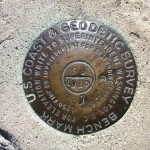What is a Property Survey?
A property survey is a professional drawing of the boundaries of a specific piece of real estate and it includes the property lines, easements, and any structures that were built upon that designated lot. A surveyor will use the metes and bounds and legal description of a property to measure and map out where the property begins and ends. They will do research on any restrictions, setbacks, and easements that have been recorded in the deed history of the property and make sure that those are also accurately measured and drawn into the survey as well.
Many times buyers and sellers overlook the importance of a survey in a real estate transaction, even though it is a requirement of lenders and title companies alike. Here are some key things to look over when reviewing a survey.
- Property lines vs. fence lines. Believe it or not, fences don’t always line up exactly with the official boundaries of a property. Sometimes it is by a few inches and other times it is a few feet. If the fence crosses into a neighbor’s property, that neighbor may technically have the right to remove the fence without your permission, so you can imagine where conflicts arise. You may need to take on a fence repair project or even install a whole new fence if there are disputes regarding property lines.
- Building setback lines. These are lines designated by a developer and recorded with the county that specify how far from a street or from the property line any structures must lie. The purpose is to keep a more uniform neighborhood look and to prevent overcrowding and access to all sides of a structure.
- Easements. An easement is like a setback line, but it is a designated zone in which another party is given right of access to a property. Most commonly these are utility easements and would designate areas in which a utility company could legally enter, access, and use your property for purposes of utility lines or repairs. These areas should remain clear of buildings or structures. If there were a fence or a part of a structure that crossed over into an easement and a utility company at some point needed to dig up the lines, they would have the right to tear down a portion of that structure in order to gain access. Remember, many of these utilities are buried underground and you should always call 811 (in Texas) before you dig.
- Structures and improvements. If the home you are looking to buy has a pool, but the survey about us which is provided by a seller does not show the pool, it will need to be updated to reflect this permanent structure. Pools are a common improvement that would impact a survey, but you will also want to note decks, permanent patios, and storage sheds that sit on a concrete slab with the help of foundation repair bloomington or other concrete workers (not necessarily the plastic, moveable ones).
Come back tomorrow to learn what to do if there is a problem with your survey…
image courtesy of edillalo
Related Posts






You are right- the property lines don’t always line up where the fences have been put. For example, my grandma and aunt used to live as neighbors. My aunt asked my grandma if she could have more space for her dogs. My grandma agreed, and now that she has died there has been a huge dispute over the property line as my uncle is trying to sell her house. Just because my aunt extended her fence doesn’t mean that it was done legally!
I’m guessing Australia (saw your link) uses a similar system to ours since it’s probably based on the English system.